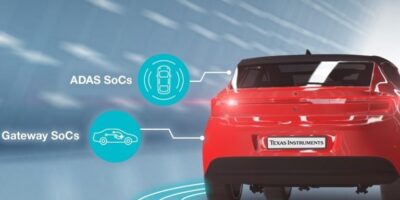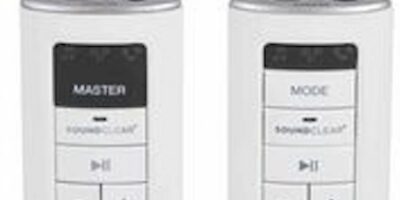Optimised for Synopsys’ ARC processor IP, a low complexity communication codec (LC3) has been developed by Synopsys with the Fraunhofer Institute for Integrated Circuits (IIS).
The new codec is designed to comply with the forthcoming Bluetooth LC3 audio codec specification and is optimised to deliver high-quality audio and voice playback in battery-powered devices incorporating ARC EM and HS DSP processors, says Synopsys.
It has been added to Synopsys’ portfolio of DesignWare ARC audio codecs and post-processing software supporting popular audio standards. It also extends Synopsys’ DesignWare Bluetooth Low Energy IP offering.
The 32-bit DesignWare ARC EM and HS DSP processors are based on the scalable ARCv2DSP Instruction Set Architecture (ISA) and integrate RISC and DSP capabilities for a flexible processing architecture. The ARC EM DSP processors offer low power and what is claimed to be industry-leading performance efficiency while the multi-core-capable ARC HS DSP processors combine high-performance control and high-efficiency digital signal processing. All ARC processors are supported by the ARC MetaWare Development Toolkit, which includes a library of DSP functions to allow software engineers to rapidly implement algorithms from standard DSP building blocks. ARC processors and the LC3 codec can be combined with Synopsys’ Bluetooth 5.1-compliant DesignWare Bluetooth Low Energy IP to deliver power-efficient, high-quality wireless audio capability for smart IoT and other Bluetooth-enabled devices.
The LC3 codec is an important feature of the Bluetooth LE Audio specification to be released by the Bluetooth Special Interest Group (SIG) that enables system on chip (SoC) designers to efficiently implement high-quality voice and audio streaming in a wide range of applications, including mobile, wearables, and home automation.
The LC3 codec for ARC processors is based on an implementation by Fraunhofer IIS that is designed to meet Bluetooth SIG requirements. The LC3 codec, running on ARC EM and HS DSP processors, allows designers to rapidly integrate a complete, pre-verified hardware and software solution for voice and speech processing into Bluetooth-enabled devices requiring minimal energy consumption, explains Synopsys.
“The rapid growth of wearable devices requiring high-quality Bluetooth audio streaming is driving the need for power-efficient processor IP with DSP capabilities that can meet intensive computation requirements of voice and audio applications. Those applications require an optimised codec providing state-of-the art voice and audio quality at minimum computational complexity,” said Manfred Lutzky, head of Audio for Communications at Fraunhofer IIS. “By porting the LC3 codec to the DSP-enhanced ARC processors, Synopsys is enabling customers to quickly implement LC3 codec functionality in their low-power SoCs. We look forward to continuing our collaboration with Synopsys so that the LC3 codec for ARC processors continues to incorporate the latest updates,” he added.
“The fact that the LC3 codec can provide very high-quality audio even at low bit rates makes it a key feature of the upcoming LE Audio standard,” said Mark Powell, chief executive officer of the Bluetooth SIG. “
John Koeter, senior vice president of marketing for IP at Synopsys, said: “Designed to process high-quality audio streams and deliver superior sound, the LC3 codec for ARC processors provides designers with a certified codec that reduces the integration time and testing required to deliver superior quality audio for Bluetooth streaming applications.”
The Bluetooth LC3 codec is available now from Synopsys with DSP-enhanced ARC EMxD and HS4xD processors.







